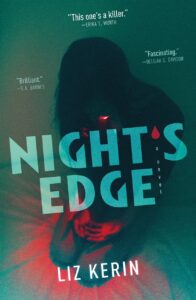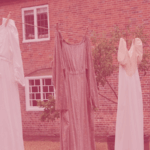There’s this family I used to babysit for who lived in the hills overlooking the lowly riff raff of greater Los Angeles. Their pride and joy was a pint-sized poodle ironically named Yeti. The kids were terrified Yeti would be devoured by a mountain lion after seeing a video of P-22 (RIP), so the parents bought him this (literal) suit of spiky armor that he had to wear whenever we let him outside after dark. He looked like a Muppet who’d been smuggled onto the set of a Mad Max movie, and he was the bravest little idiot I’d ever seen. It was like he knew he was wearing this deathproof vest and could do whatever he damn well pleased. One night, he scared away a raccoon three times his size, yapping in its snarling face till it skulked off, totally bewildered. I’ve been thinking about Yeti a lot lately. Specifically, his suit of spiky armor.
I am not considered high risk for mountain lion attacks. But I am a writer by trade, which means I’m open to a different sort of attack. When I write, I pull from my own emotional well. I am tethered to the hearts of my characters, even if they’re not reenacting my life story. I’m processing what they’re processing. Confronting the same hard truths. Sometimes, those truths are just too sharp, even when I’m dealing with fiction. When I set out to write my most recent book, I realized I needed a suit of spiky armor.
I needed vampires.
Horror is a remarkable genre because it creates this beautiful buffer between us and life’s more monstrous moments. When we write in this style, we can assure ourselves that none of this is real despite whatever emotional intimacy we feel because. . . well, vampires aren’t real. When I was writing my book Night’s Edge, I felt safe to process all sorts of difficult themes related to childhood trauma because my main character, Mia, was living in a world inhabited by one of our culture’s most ubiquitous mythological tropes. I knew everything there was to know about vampires. What I didn’t know was how to unpack my own complicated, morally gray feelings surrounding family, duty, and trauma. By writing a work of horror, by exploring Mia’s complex relationship with her mother who subsists on human blood, I was finally able to do that. Wearing my spiky suit of vampire armor, I could walk into these scenes, hear these echoes from my past, and weave them into a story I could make sense of. Of course, my mom is not a vampire. She is a resilient and complex human being who has faced some profoundly sobering challenges in her life. And yet, that makes her very much like the people in this book. Paradoxically, by using the imaginary forces of vampirism, these characters become even more real. They become mine. And now, they are yours.
I’m fairly certain I’ll never write a memoir, but I’ll write genre fiction every day till my last. That’s where I feel safe to find myself, again and again. I’m willing to bet I can speak for hundreds of my horror-writing compatriots, who use fictional monsters to make sense of the ones we know all too well. We’re like Yeti with our suits of spiky armor, howling right back at the coyotes till they retreat to the wilderness, trembling in the face of our audacity. Wondering how the hell we pulled it off.
*
NIGHT’S EDGE is available 6/20/2023 from Tor Nightfire. The sequel, FIRST LIGHT, hits shelves 4/23/24.
Featured image: Love and Pain (1895), Edvard Munch


















